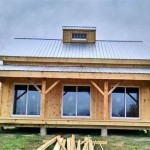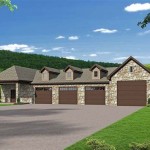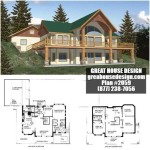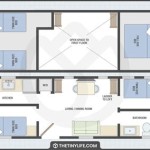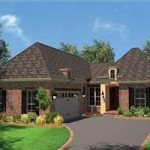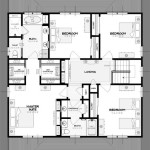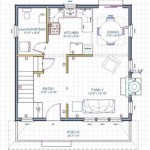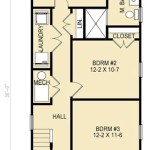Tiny Cottage House Plans With Porches: Maximizing Charm and Function
The appeal of tiny cottage house plans with porches lies in their ability to blend minimalist living with the comforting embrace of outdoor space. These designs cater to individuals and small families seeking a simpler lifestyle, reduced environmental impact, and increased financial freedom. By carefully considering layout, materials, and the integration of a well-designed porch, these homes achieve a balance of practicality and aesthetic appeal.
Tiny cottage house plans are defined by their compact size, typically ranging from under 400 square feet to around 800 square feet. The inclusion of a porch expands the living area and provides a transitional zone between the interior and the exterior environment. This outdoor space becomes an integral part of the home, influencing its design and functionality. The success of these plans hinges on efficient space utilization, thoughtful design choices, and a commitment to sustainable living principles.
Key Considerations for Tiny Cottage House Plans
Developing a successful tiny cottage house plan with a porch requires careful consideration of several key aspects. These include optimizing interior space, selecting appropriate materials, and ensuring seamless integration of the porch into the overall design.
Optimizing Interior Space: Given the limited square footage, efficient space utilization is paramount. Multipurpose furniture, such as sofa beds, foldable tables, and built-in storage, are essential. Vertical space should be maximized with shelving and lofted areas for sleeping or storage. Open floor plans create a sense of spaciousness and allow natural light to penetrate deeper into the interior. The kitchen area should be compact yet functional, with strategically placed appliances and ample counter space. The bathroom requires careful planning to maximize usable space without sacrificing comfort. Pocket doors or sliding doors can save valuable square footage compared to traditional swing doors.
Material Selection: The choice of materials significantly impacts the aesthetics, durability, and sustainability of the tiny cottage. Natural materials like wood, stone, and reclaimed materials contribute to the cottage's charm and reduce its environmental footprint. Energy-efficient windows and insulation are crucial for maintaining a comfortable indoor climate and minimizing energy consumption. Durable roofing materials that can withstand various weather conditions are essential for long-term protection. Utilizing locally sourced materials reduces transportation costs and supports local economies. Selecting low-VOC (volatile organic compound) paints and finishes improves indoor air quality.
Porch Integration: The porch should be designed as an extension of the interior living space. Its size, orientation, and design should complement the overall aesthetic of the cottage. The porch can serve as a dining area, a relaxation zone, or an outdoor workspace. Consider the climate and prevailing weather conditions when designing the porch. A covered porch provides protection from rain and sun, while screened porches offer insect protection. Adding comfortable seating, outdoor lighting, and plants enhances the porch's usability and ambiance. The placement of the porch relative to the main entrance and surrounding landscape influences its accessibility and privacy. The porch can also serve as a transition zone for removing shoes and outerwear, helping to maintain cleanliness inside the cottage.
Porch Design Elements and Their Impact
The porch is a defining feature of a tiny cottage, profoundly influencing its character and livability. Various design elements contribute to the porch's functionality and aesthetic appeal. These include the roof style, railings, flooring, and accessibility features.
Roof Style: The roof style of the porch should complement the roof style of the main cottage. Common options include gable roofs, shed roofs, and hip roofs. A gable roof provides ample headroom and allows for natural light to enter the porch. A shed roof is simpler and more affordable, ideal for smaller porches. A hip roof offers a more sophisticated look and provides protection from the sun from multiple angles. The overhang of the roof should be sufficient to protect the porch from rain and sun. Consider adding gutters and downspouts to manage rainwater runoff.
Railings and Balustrades: Railings and balustrades provide safety and define the boundaries of the porch. Wood railings offer a classic cottage aesthetic. Metal railings are durable and require minimal maintenance. Cable railings provide a modern look and offer unobstructed views. Consider the height and spacing of the railings to comply with local building codes. Railings can be decorated with plants or decorative elements to enhance their visual appeal. The choice of railing material should complement the overall design of the cottage.
Flooring: The flooring material should be durable, weather-resistant, and aesthetically pleasing. Wood decking offers a warm and natural look. Composite decking is a low-maintenance alternative to wood. Stone or brick pavers provide a durable and elegant surface. Concrete flooring is affordable and can be stained or stamped for added visual interest. The flooring should be slip-resistant to prevent accidents. Consider the drainage of the porch flooring to prevent water from accumulating.
Accessibility Features: Consider incorporating accessibility features into the porch design to accommodate individuals with mobility limitations. Ramps provide access for wheelchairs and walkers. Wider doorways and pathways improve accessibility. Handrails offer support and stability. Ensure that the porch flooring is level and free of obstacles. Proper lighting enhances safety and visibility. These features make the tiny cottage more inclusive and accessible to people of all ages and abilities.
Integrating Sustainable Practices in Design and Construction
Tiny cottage house plans naturally lend themselves to sustainable living. Integrating sustainable practices in the design and construction phases minimizes environmental impact, reduces energy consumption, and promotes a healthier living environment.
Passive Solar Design: Orient the cottage to maximize solar gain in the winter and minimize it in the summer. South-facing windows allow sunlight to enter the cottage during the colder months, providing natural heating. Overhangs and awnings can shade the windows during the warmer months, preventing overheating. Proper insulation minimizes heat loss in the winter and heat gain in the summer. Consider the local climate and prevailing wind patterns when designing the cottage's orientation.
Water Conservation: Implement water-saving fixtures and appliances, such as low-flow toilets, showerheads, and faucets. Install a rainwater harvesting system to collect rainwater for irrigation or non-potable uses. Use drought-tolerant landscaping to minimize water consumption. Consider a greywater system to recycle water from showers and sinks for toilet flushing or irrigation. Educate occupants about water conservation practices.
Energy Efficiency: Use energy-efficient appliances and lighting, such as LED bulbs and Energy Star-rated appliances. Install solar panels to generate electricity. Consider a small-scale wind turbine for supplemental power. Use smart home technology to control lighting, heating, and cooling systems. Properly seal windows and doors to prevent air leaks. Regularly maintain heating and cooling systems to ensure optimal efficiency. Educate occupants about energy conservation practices.
Material Sourcing and Waste Reduction: Prioritize locally sourced and sustainable building materials. Use reclaimed or recycled materials whenever possible. Minimize construction waste by carefully planning material orders and reusing leftover materials. Compost organic waste and recycle other materials. Choose materials that are durable and require minimal maintenance. Consider the life cycle of building materials and their environmental impact. Support local businesses and suppliers that promote sustainable practices.
By carefully considering these aspects, tiny cottage house plans with porches can provide a comfortable, sustainable, and aesthetically pleasing living experience. The key is to balance functionality with design, creating a space that reflects the homeowners' values and lifestyle while minimizing their environmental impact.
:max_bytes(150000):strip_icc()/SL-1830_FCR-79fe2709870b47fdb6b1fd9561483952.jpg?strip=all)
26 Tiny House Plans That Prove Bigger Isn T Always Better
:max_bytes(150000):strip_icc()/SL-731_FCP-83e310d6c4f4422a88bd36464339bf30.jpg?strip=all)
26 Tiny House Plans That Prove Bigger Isn T Always Better

27 Adorable Free Tiny House Floor Plans Small

Capitalplanos Info Cottage House Plans Small Floor

Small Cottage House Plans With Amazing Porches

Modern Farmhouse Cabin Plan Pacific Crest Tiny House Floor Plans Cottage
:max_bytes(150000):strip_icc()/SL-1980_FCP-b625a179a38d4857b4da2bd5a127b181.jpg?strip=all)
26 Tiny House Plans That Prove Bigger Isn T Always Better

Country Porches 2 Bedroom Cottage Style House Plan 5712

New Tiny House Plans Blog Eplans Com

Plan 67754mg Cozy Tiny Home With Gabled Front Porch Small Cottage Homes House Plans

